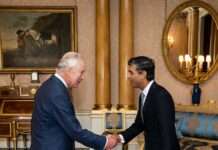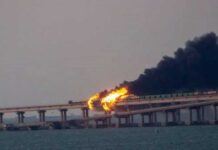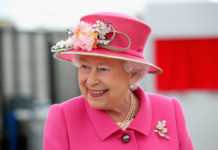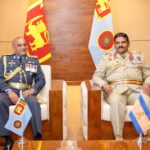By: Nitin Gadkari from Faugy Strategy
In colloquial terms, one could say that Nepal has done a Maharashtra. This western Indian state had a Shiv Sena government ruling not so long back with NCP (Nationalist Congress Party). Shiv Sena had fought the state assembly elections in alliance with the ruling BJP (Bhartiya Janta Party) and won a combined majority good enough to form the government in Maharashtra. Yet they did not do so as the Shiv Sena Chief wanted to be the chief minister despite having only half the seats compared to the BJP. This precondition led to a stalemate and breakup in the alliance. Shiv Sena joined with the opposition and formed a government, with their chief named the chief minister. Many called it a betrayal of the people’s mandate. The scenario in Nepal has unfolded like this script.
On 25th December ’22, the last day of the seven-day deadline given by President: Bidhya Devi Bhandari, there was drama in Kathmandu to reach a consensus for forming a government. The pre-poll ruling alliance consisting of NC (Nepali Congress), CPN(M: Mao) and the CPN(Unified Socialist), Loktantrik Samajbadi party and Rashtriya Janmorcha tried one final time to come to a consensus on government formation. This a scenario which may have been discussed umpteen number of times while allying, yet did not conclude. The stumbling block was the CPN (M) chief Pushpa Kumar Dahal’s (Prachanda) demand to be named the prime minister in the first half of their tenure. A demand not acceptable to the NC, which had 78 seats compared to CPN (M) 32. They were willing to concede the post to CPN(M) in the second half. Not finding a satisfactory solution to the problem, the CPN(M) chief left in a huff and landed at the residence of his old coalition partner, the CPN (UML) chief: Shri KP Oli’s house. Realising a golden opportunity, the senior partner agreed to support the candidature of CPN (M) chief for Prime Minister for half the tenure and form a majority government with the support of five smaller parties and three independent MPs (members of parliament), taking the new coalition strength to 169. With this proposal, the new coalition partners submitted their claim to form the government to the President, who promptly accepted the same and swore the CPN(M) chief as Prime Minister in a swearing ceremony held on 26th December ’22. The President has given the new government a maximum of 30 days to prove the majority on the floor of the house.
If one has to analyse this political drama critically, it has once again proved that political parties’ ideologies and election manifestos have very little meaning; what matters is power. In Nepal, this has been proved time and again. If the voter is disgusted at such acts of breach of trust, he is mute and helpless. Once again, Oli and Prachanda have reached centre-stage power in Nepal. How long it would last is anybody’s guess. A lot happened between submitting the election results by the election commission to the President. The political parties are bitterly contesting to put their candidates in the fray, with some old politicians actively lobbying to become the President. There was a power struggle in the Nepali Congress Party where the younger generation contested the leadership of Sher Bahadur Deuba. The flip flop of CPN (M) and, most importantly, is the coming election for the Nepali President on 23rd March ’23, when the current President relinquishes her post on completion of her tenure.
What Does it Mean for Nepal?
The formation of a government is a step better than no government. Even if this coalition may not appear stable, it promises that the government will start the business of ruling. A minority party prime minister would have to constantly look for support from the more significant partner KP Sharma Oli’ CPN (UML) in this case. It is anybody’s guess how much independence the prime minister would enjoy. But the issue likely to trouble the government most will be the issues raised by the smaller Coalition parties like the Rashtriya Swantra Party, which has 20 seats, led by a young entrepreneur who left his job to join politics. They are a party with a socialist agenda, and it is likely to conflict with left-party manifestos. But more trouble could brew from the Madhesi and Tharu parties, the Janta Samajwadi party and the Nagrik Unmukti Party. These two would press for more powers to the terai region and more say in governance. These demands would contradict the Maoist agenda. Issues of the Citizenship bill and constitution would again come to the fore.
There is an inherent dichotomy in Nepal politics today. The voting public wants a change. The younger candidates and young parties have received much support from the voting public. The Rashtriya Swantra Party was launched in July of 2022 and has been voted to become the fourth-largest party in the parliament. It is a party of young candidates, including their chief, Rabi Lamichhane. Even the challenge to NC chief Deuba came from the young brigade in the Congress-led by Gagan Thapa. This thought reflects the change would come in through the younger generation. Both Pranchda and KP Oli are now seen as old politicians. Even Sher Bahadur Deuba faces a stiff challenge in Congress, as described above. If the new government messes up as they have done in the past and if the political parties continue to choose their partners based on personal interest rather than public interest, the scenario might become volatile, leading to a law and order problem. This situation is speculation, but this possibility could become a reality in Nepal tomorrow.
What are the Implications for India?
Indian Prime Minister Shri Narendra Modi has already congratulated the new Prime Minister, Shri Pushpa Kumar Dahal, reminding him of the special relationship Nepal shares with India and that these ties would be bettered in his tenure. There is more optimism in the message than what would be felt in the corridors of the external affairs ministry of India. Shri KP Oli and Shri Prachanda have left leanings that naturally incline them towards China. Shri Oli has made no secret of his liking for the Chinese by awarding them contracts and accepting a more significant Chinese role in the affairs of Nepal. Shri Prachanda, a Maoist, is ironically a lesser ally than his partner. Yet, with China making herculean efforts to woo the Himalayan kingdom, it would not be surprising to find a dejure tilt in foreign policy towards China.
What could be a dampener in the Chinese foray into Nepal is the American interest that has awakened since their cold war with China has deepened. Nepal Parliament approved a $ 500 million US government aid to Nepal in February 2022. The loan, called the millennium Compact challenge (MCC), is meant for developmental projects in Nepal. The Chinese pressuring Nepal criticised the aid not to accept it. It took five years for Nepal to accept the aid before its deadline expired. A three-cornered contest in Nepal between India, China and America would benefit the locals most, followed by India. India will not mind contracts meant for the Chinese to go the American companies.
For India, the two main concerns would be the continuation of the old ties with the Nepalese diaspora in terms of recruitment, which comes from Gorkha personnel joining the Indian army. This matter is critical as erosion of this contract and trust will drill a hole in the relations, which would be hard to seal. Traditionally the Nepalese army is inclined towards support from the Indian army. Still, the latest Agniveer scheme has put fear in the Nepalese Gurkha, which could be exploited by parties inimical to India. And the second is the Indo-Nepal citizenship treaty. Any tampering in the treaty’s clauses, like closing the borders or preventing Indian nationals from moving into Nepal without a passport, would spell doom to Indo-Nepal relations. The second concern is far-fetched as it would hurt the Nepalese interests in India more. Yet, political parties in Nepal are capable of doing the impossible to retain power like Shri KP Oli, in his last tenure, manufactured the Indo Nepal border dispute at the Kalapani Lipulekh trijunction in Uttarakhand. India pronounced it as unilateral cartographic aggression by Nepal, which most Indian government officials believe was at the behest of China. Such acts erode mutual trust and set back relations by a few years.
The continued influence of the Chinese ambassador in Kathmandu in affairs of the state would be another matter of concern. The careful bringing back of relations with India could receive a setback if the combination of shri Prachanda and Shri KP Oli return to grant audiences to the Chinese ambassador more than what diplomatic curtsies allow. China has appointed a new ambassador to Nepal, Mr Chen Song, a former Deputy Director of Asian Affairs in the Chinese foreign ministry. He is well versed in the affairs in Nepal, and his arrival coincides with the two Nepalese communist parties coming together, which signifies a Chinese omen in Nepal. China is keen to keep the Americans away from Nepal, which was on the cards if Sher Bahadur Deuba had continued to remain the Prime Minister. He had rejected commercial loans from China for their railroad connectivity project, despite repeated calls for the same by the Chinese. If there are signs here, readers are welcome to pick them up.
Conclusion
Nepal has a new government and a new prime minister. It is old wine in a new bottle. Will it taste any better this time? Only time will tell. The politics of personal interests and power are their best display in Kathmandu. It is hard to call any one friend and someone enemy as john F Kennedy’s famous words ring in the ear with a twist: ‘In Politics, there are no permanent friends or enemies; there are only personal interests. It rings true in today’s Nepal.











